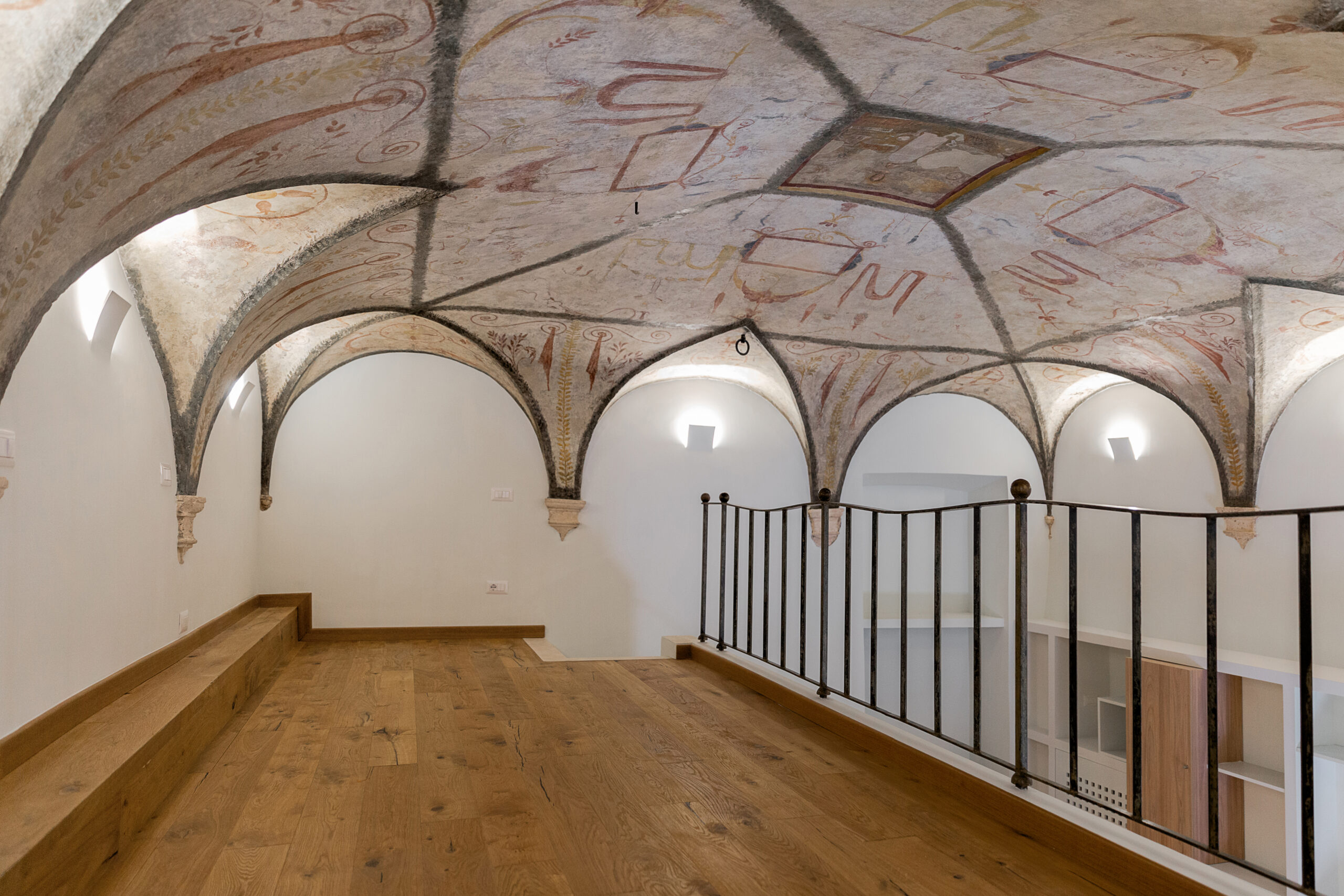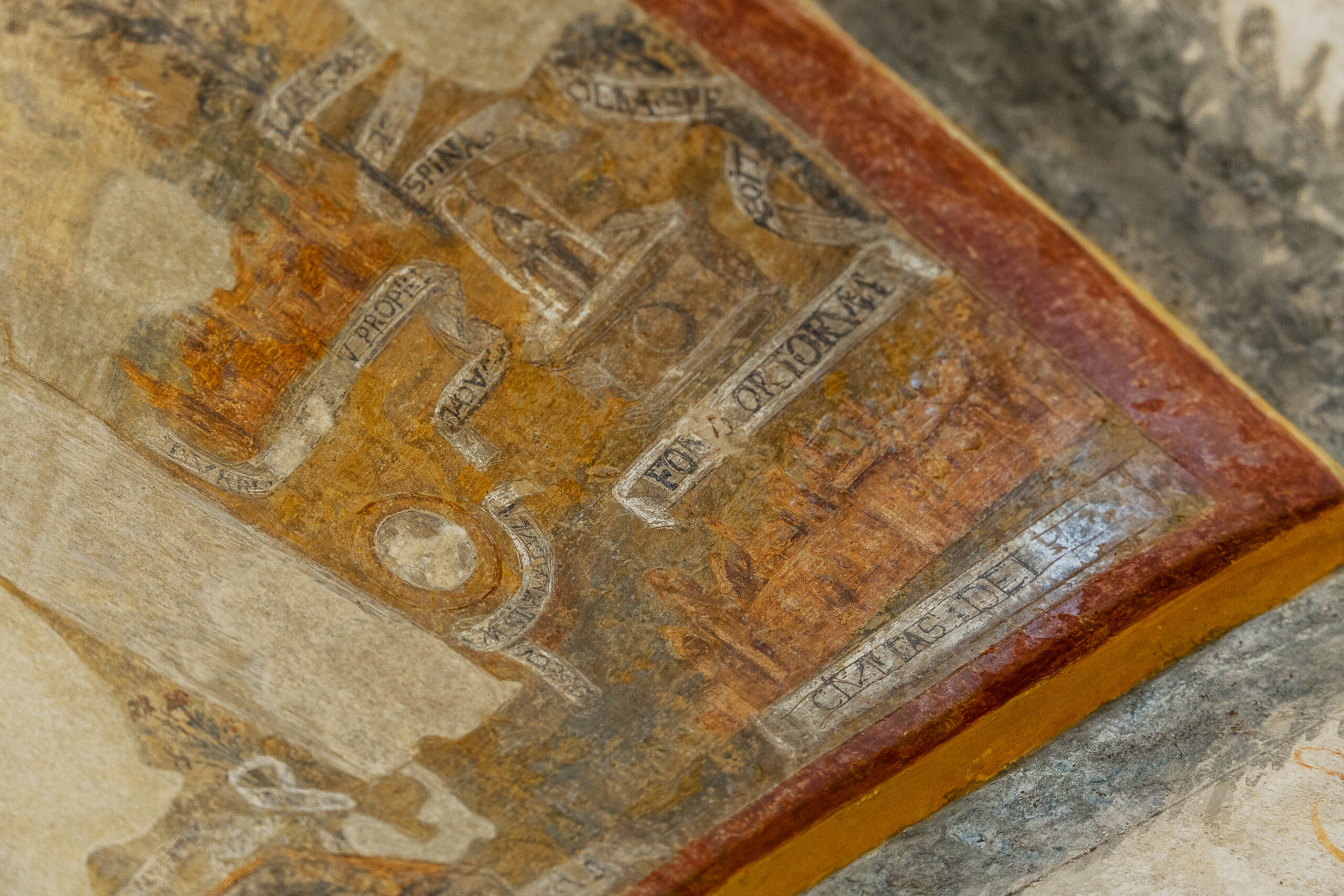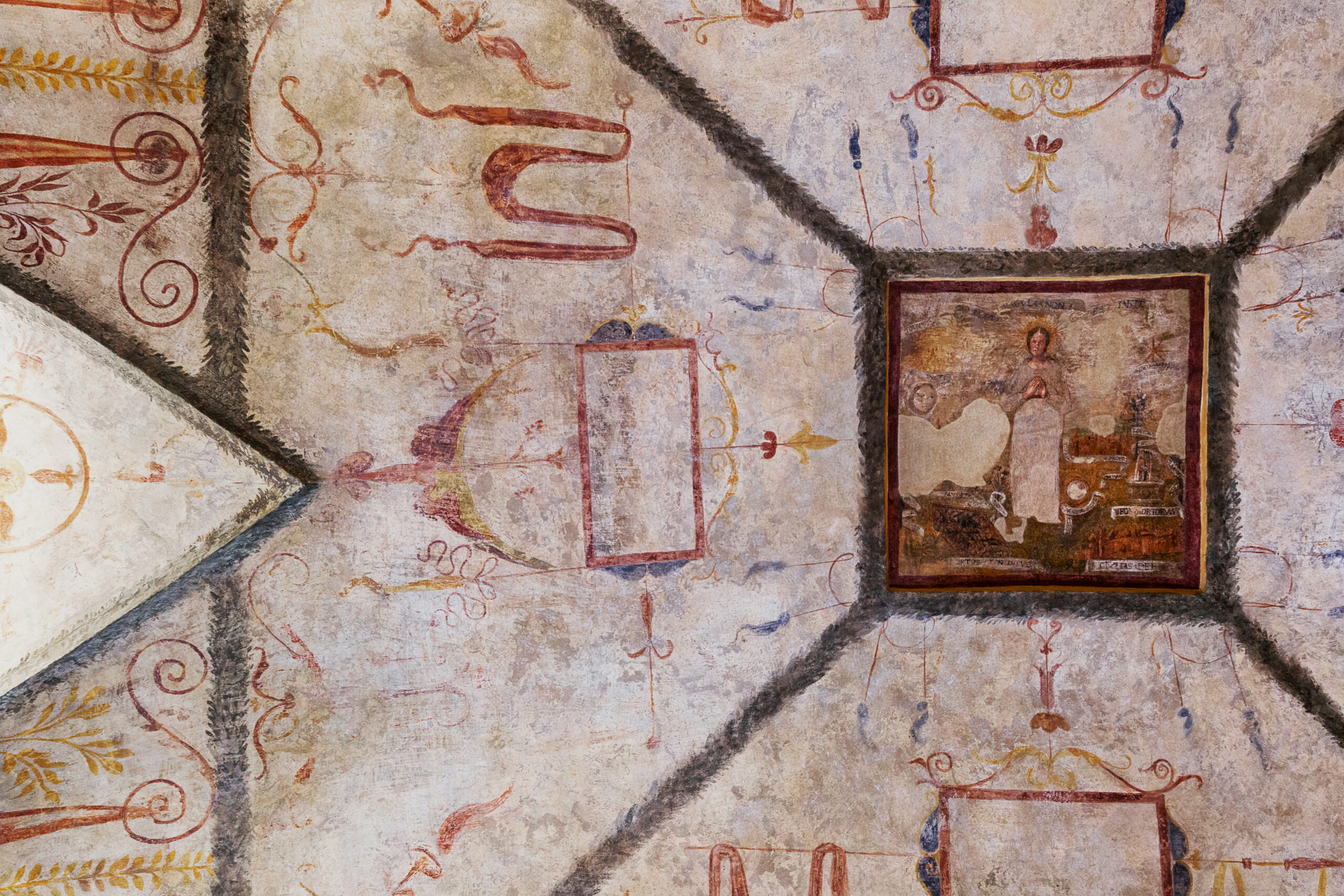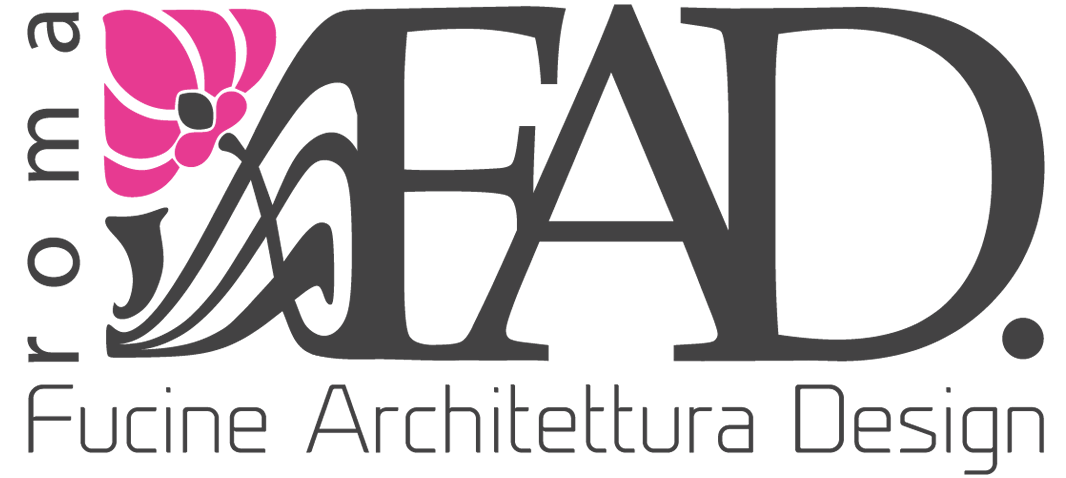An enchanting work in the centre of Rome
The restoration and enhancement of a hidden beauty
Nowadays, the architectural restoration is still a controversial topic; the comparison between the various schools of thought is open and there are numerous ways to approach the work.
Our Architectural Studio has recently carried out a restoration project in the historic centre of Rome, in cooperation with the Restorer Leonida Pelagalli. Before talking about our project "Walking through the historical alleys", a brief introduction: on Art. 29, Paragraph 4 of the Code of Cultural Heritage and Landscape. This Paragraph states: "Restoration must be understood as a direct intervention on the asset by means of a series of operations, aimed at the material integrity and restoration of the asset, its preservation and the conveyance of its cultural values. According to the current legislation, in the event of real estates located in areas declared at seismic hazard, the restoration must include structural improvement interventions."
However, this Paragraph does not exhaustively define the term "Preservation"; consequently, different approaches have developed over the years, which are briefly summarised below:
The restoration can be divided into:
Our Architectural Studio has recently carried out a restoration project in the historic centre of Rome, in cooperation with the Restorer Leonida Pelagalli. Before talking about our project "Walking through the historical alleys", a brief introduction: on Art. 29, Paragraph 4 of the Code of Cultural Heritage and Landscape. This Paragraph states: "Restoration must be understood as a direct intervention on the asset by means of a series of operations, aimed at the material integrity and restoration of the asset, its preservation and the conveyance of its cultural values. According to the current legislation, in the event of real estates located in areas declared at seismic hazard, the restoration must include structural improvement interventions."
However, this Paragraph does not exhaustively define the term "Preservation"; consequently, different approaches have developed over the years, which are briefly summarised below:
The restoration can be divided into:
- Critical-preservative restoration: defined by the Art Historian Cesare Brandi. His approach proposes the restoration project as a "critical reading" of the monument, to be preserved in the same way we received it. The work is restored preserving the various alterations that time has exerted on the original materials (patina). This approach is the closest one to the aforementioned legislation, since it aims to preserve the information contained in the asset.
- Prepositive-mimetic restoration: the Restorer completes the lost portions of the works and, in some cases, may recreate the ideal existing or presumed shape of the work.
THE PRESERVATION STATE OF OUR VAULT
The restoration approach to our project was mainly preservative.
The room is located on the ground floor and consists of a large quadrangular premise. It is covered by a cloister vault with lunettes. The decorations are mainly of a vegetal nature: a deep green laurel leaves garland runs along the entire perimeter of the vault, and delimits the spaces decorated with volutes and racemes.
The surface of the vault is plastered with pozzolana mortar and decorated with the "lime" technique. Dangerous detachments of plaster had caused the fall of portions of painted mortar, with decohesion of the pigments which made up the colours. Although the vault was well preserved, several portions were abrased and a recent light painting has concealed large painted surfaces.
The room is located on the ground floor and consists of a large quadrangular premise. It is covered by a cloister vault with lunettes. The decorations are mainly of a vegetal nature: a deep green laurel leaves garland runs along the entire perimeter of the vault, and delimits the spaces decorated with volutes and racemes.
The surface of the vault is plastered with pozzolana mortar and decorated with the "lime" technique. Dangerous detachments of plaster had caused the fall of portions of painted mortar, with decohesion of the pigments which made up the colours. Although the vault was well preserved, several portions were abrased and a recent light painting has concealed large painted surfaces.
RESTORATION INTERVENTIONS
Given that the painting was in a precarious condition, we decided to mainly intervene with a dry cleaning, limiting the use of aqueous solutions to specific well-preserved areas. Our intervention was therefore divided into different stages.
Stage 1: Study of the work, both in its entirety and through the mapping of its surfaces. This allowed us to record the preservation state of the various materials that make up the work.
Stage 2: We removed the incoherent deposits, such as dust, soil, etc., that had settled on the surface over the years; in this phase, we also identified the portions of plaster already detached or that were falling down.
Stage 3: Once the unstable portions have been delimited, we applied a protective coating, by using one or more layers of gauze or special paper to the painted surface, to temporarily stabilise the surfaces and consequently facilitate the subsequent reinforcement.
Stage 1: Study of the work, both in its entirety and through the mapping of its surfaces. This allowed us to record the preservation state of the various materials that make up the work.
Stage 2: We removed the incoherent deposits, such as dust, soil, etc., that had settled on the surface over the years; in this phase, we also identified the portions of plaster already detached or that were falling down.
Stage 3: Once the unstable portions have been delimited, we applied a protective coating, by using one or more layers of gauze or special paper to the painted surface, to temporarily stabilise the surfaces and consequently facilitate the subsequent reinforcement.

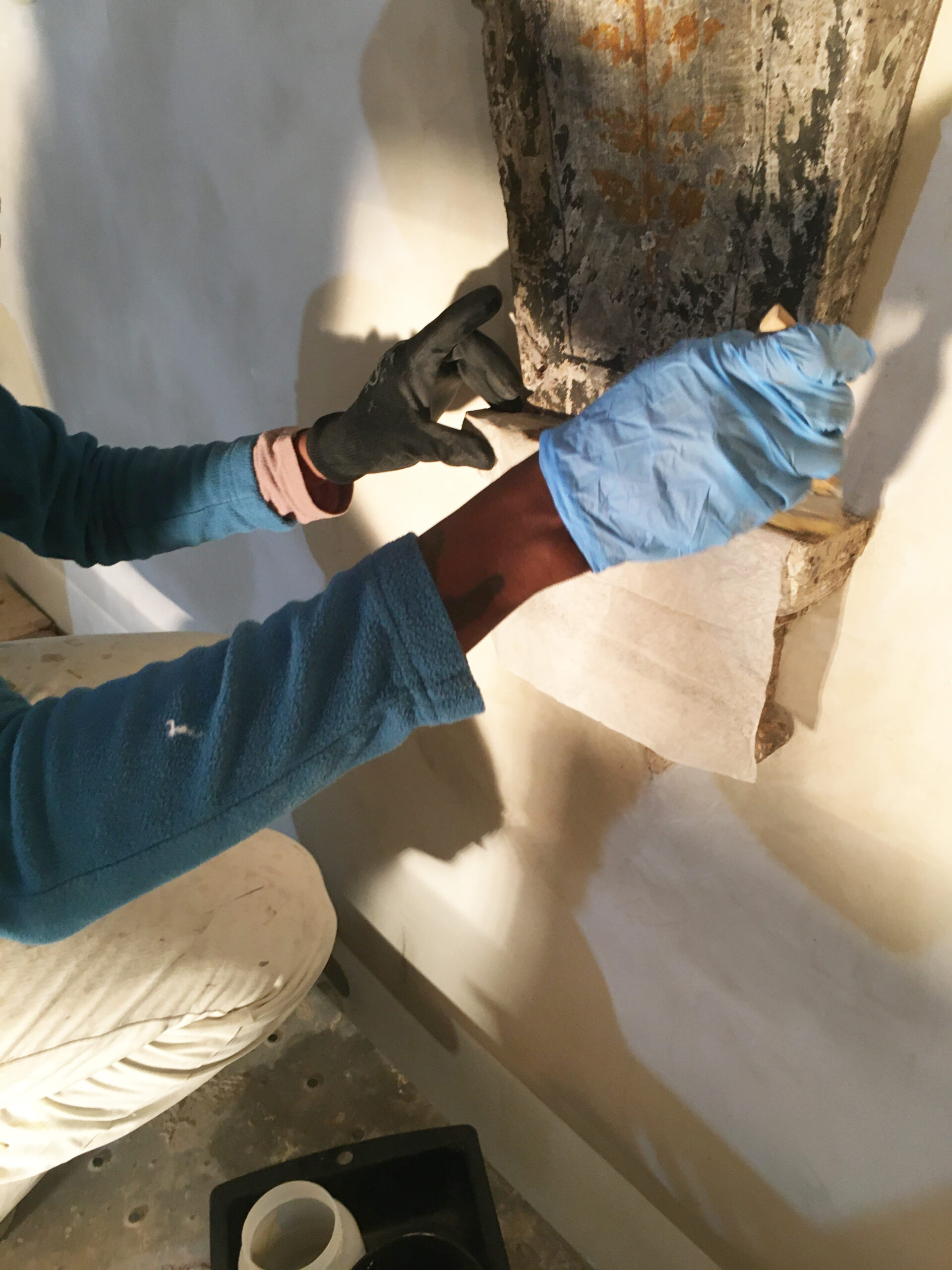
Stage 4: Micro-injections were carried out between the various levels of the plaster, to give cohesion to the disintegrated microstructures o
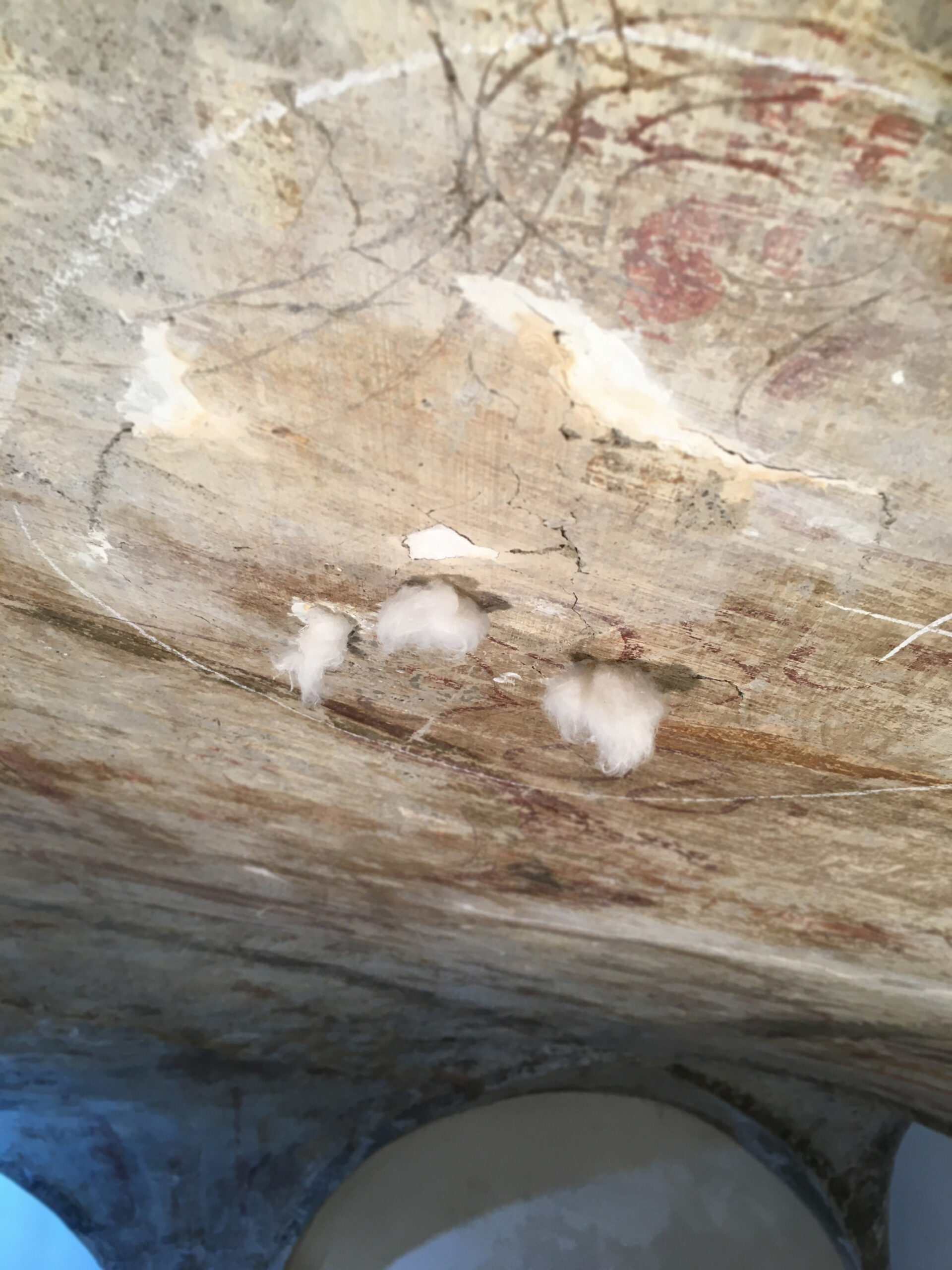
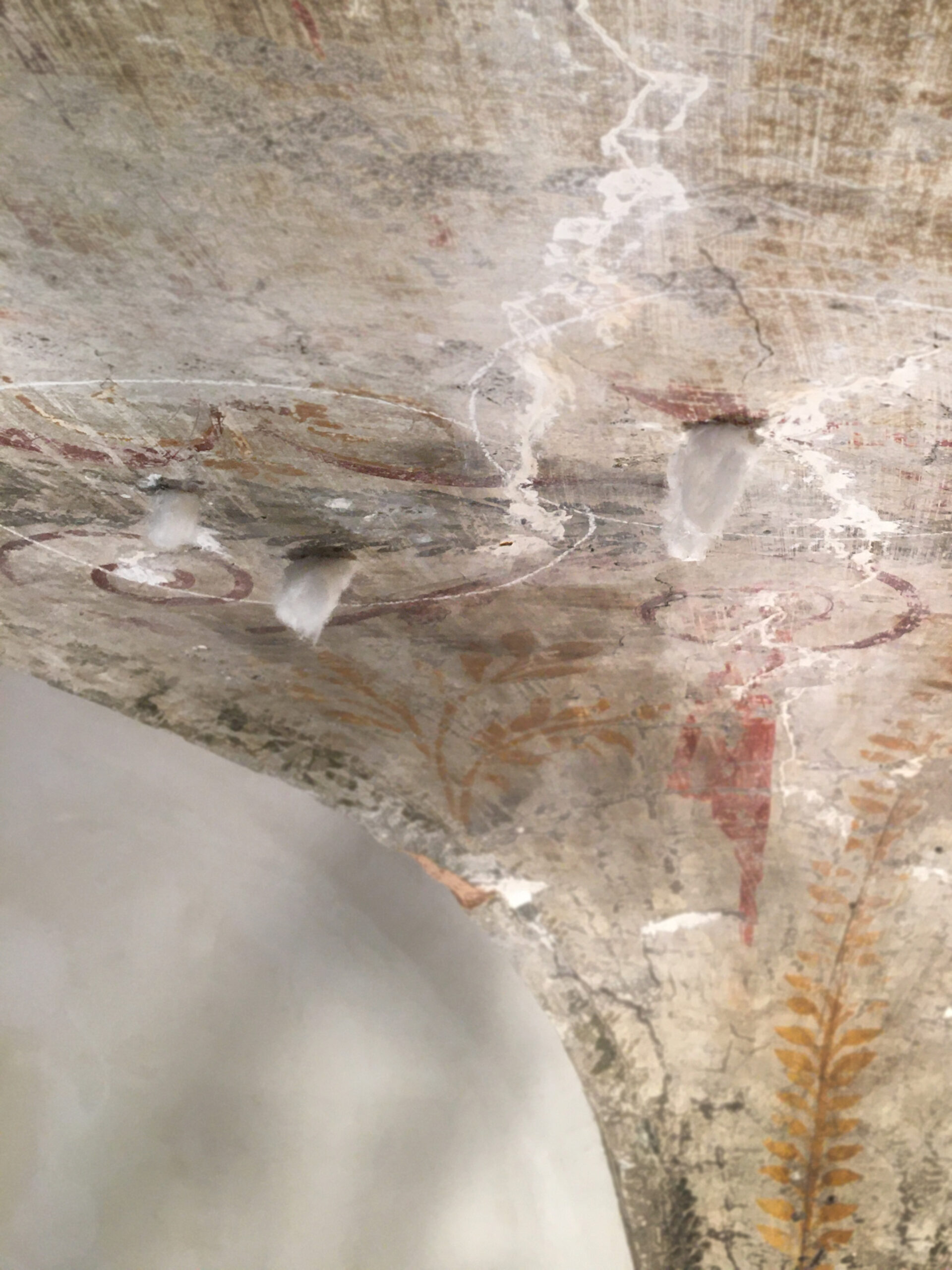
Stage 5: We removed the improper materials from the painted surface. These are the result of the alteration of materials intentionally used in previous restorations, or inadequate or no longer functional. Chemical products or manual mechanical systems (cellulose pulp wraps) were used for the cleaning; this operation is irreversible and requires the attention and experience of the Restorer. If it is badly performed it may damage the work forever.


Stage 6: The stucco work involved the identification and application of materials, compatible with the original ones. The mortar to be used must be composed with aggregates and binders, whose granulometry and colour is similar to that on which the decoration is present.
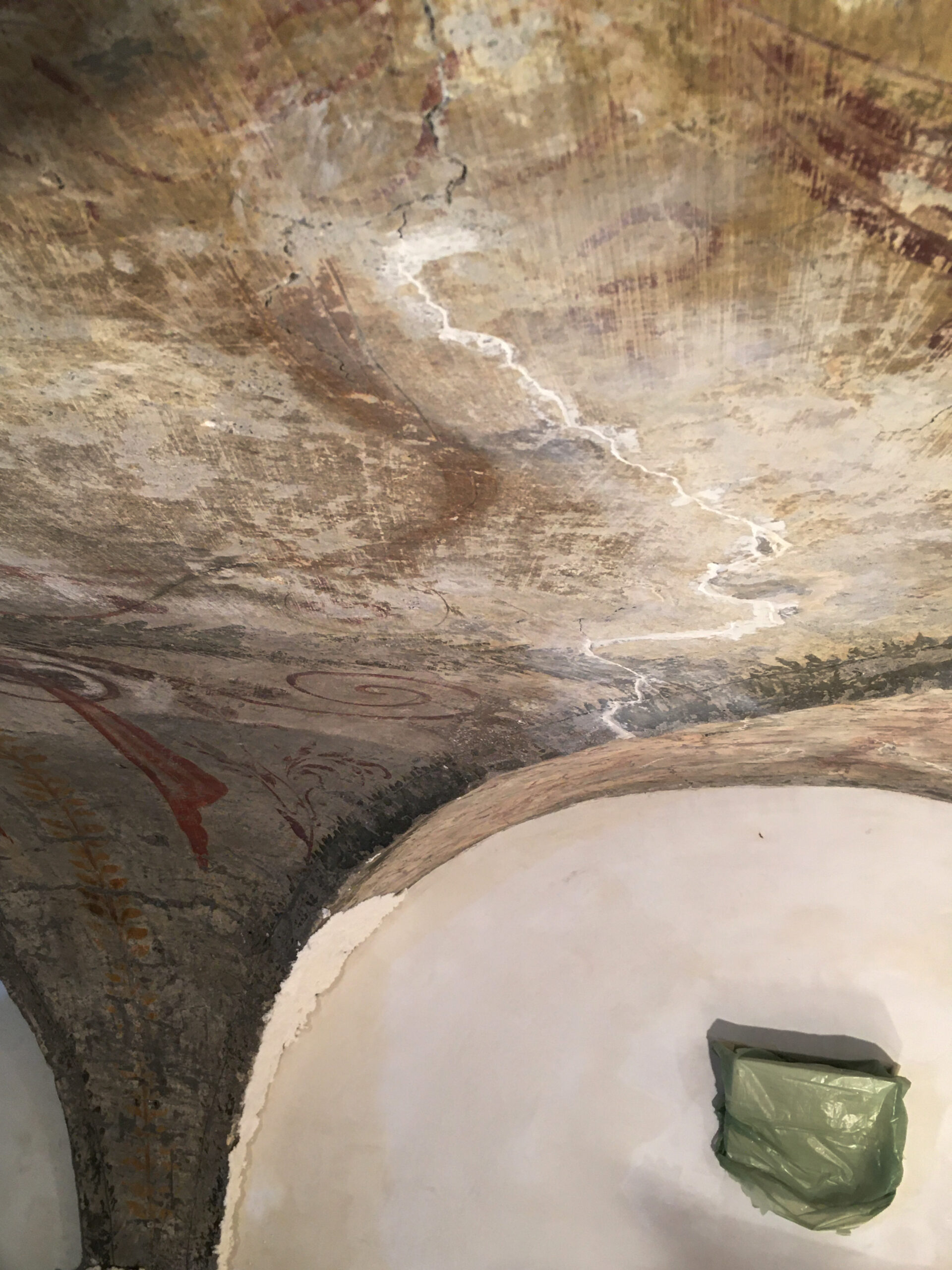
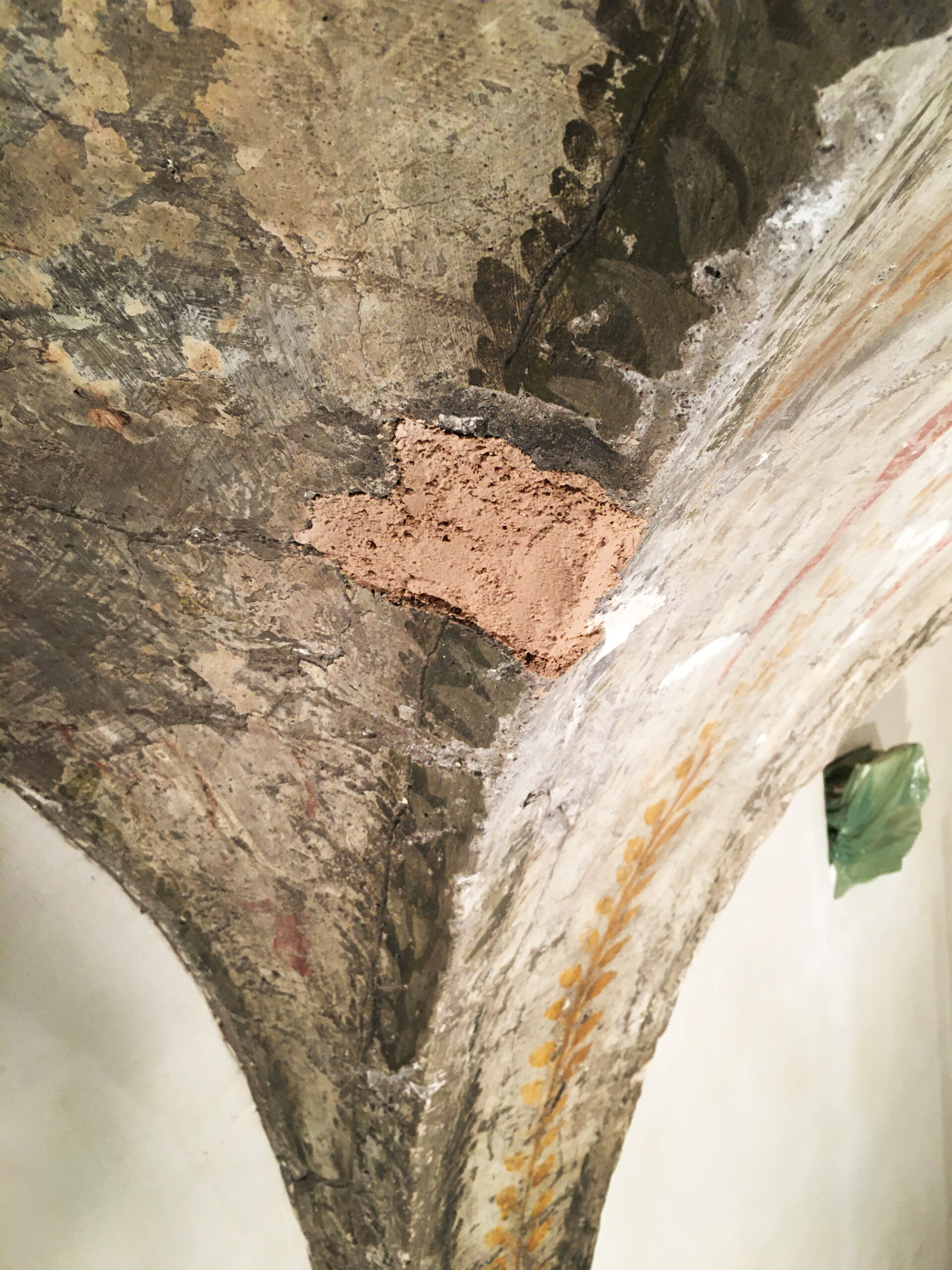
Stage 7: The pictorial reintegration was performed by means of a sub-level technique, to keep the Restorer's intervention recognisable. Neutral colours were used where the painting was missing.
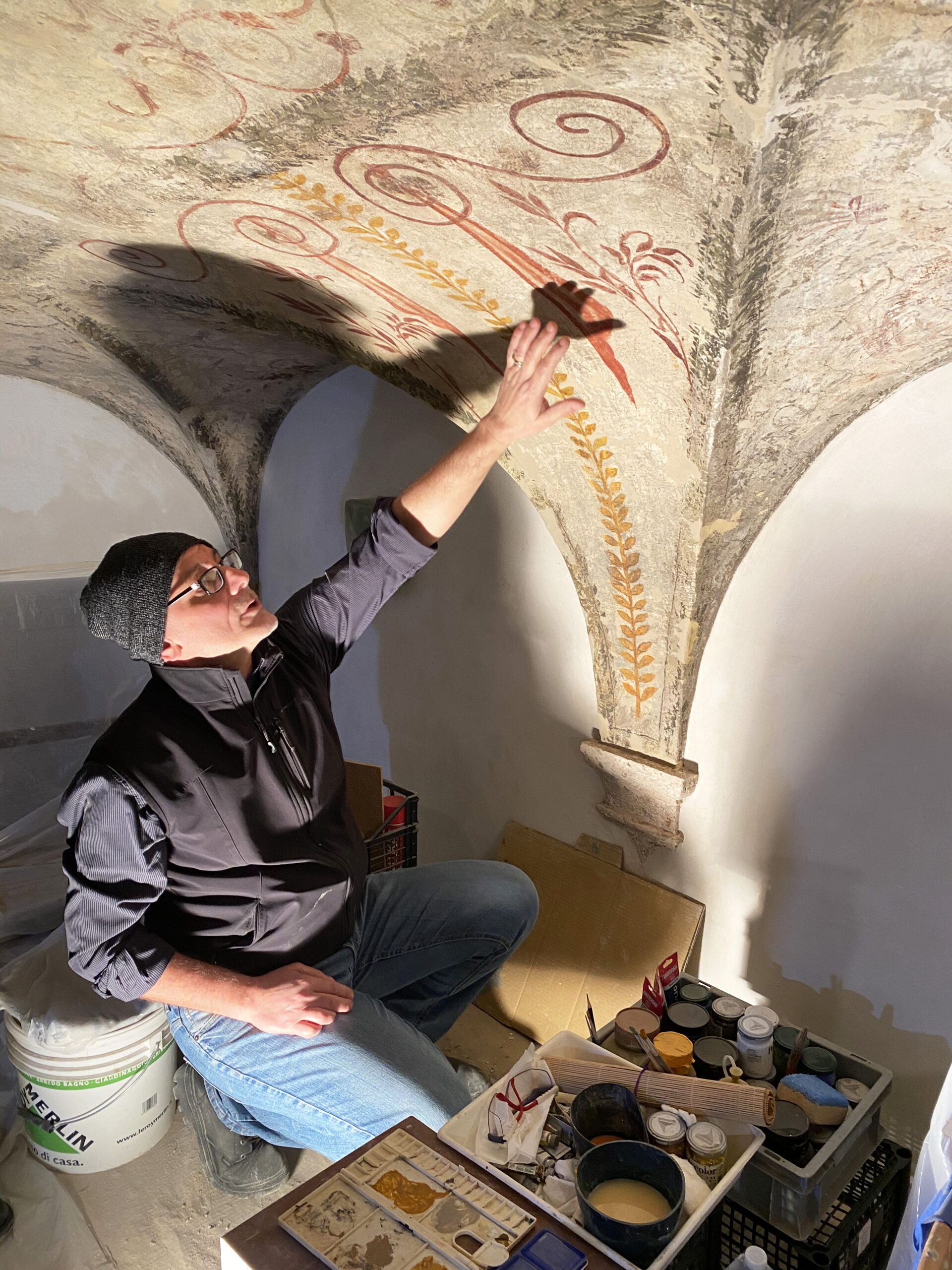
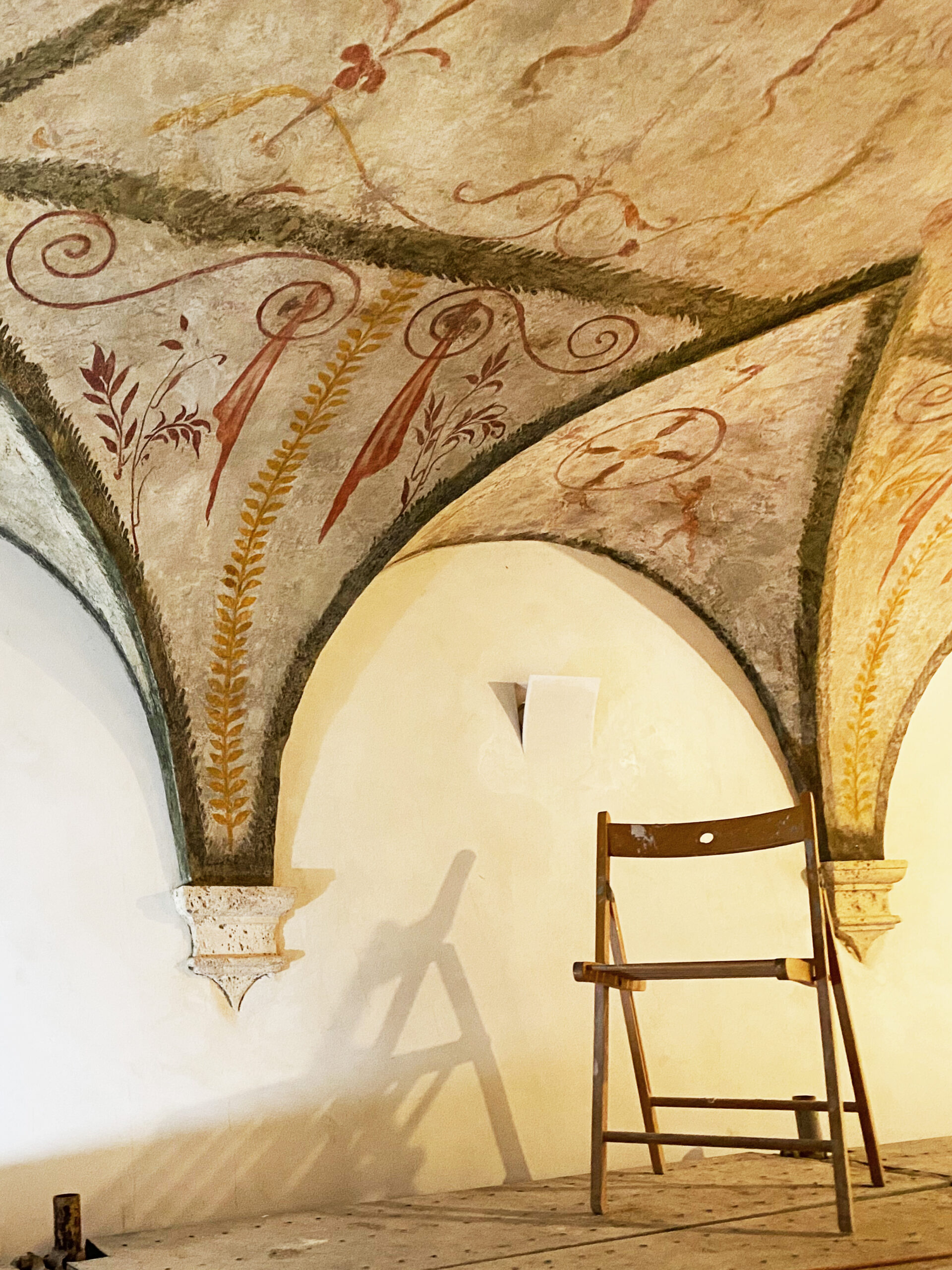
PHOTO OF THE RESTORATION COMPLETED
